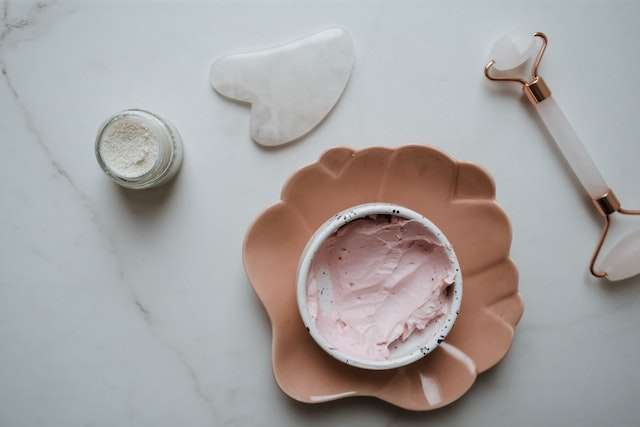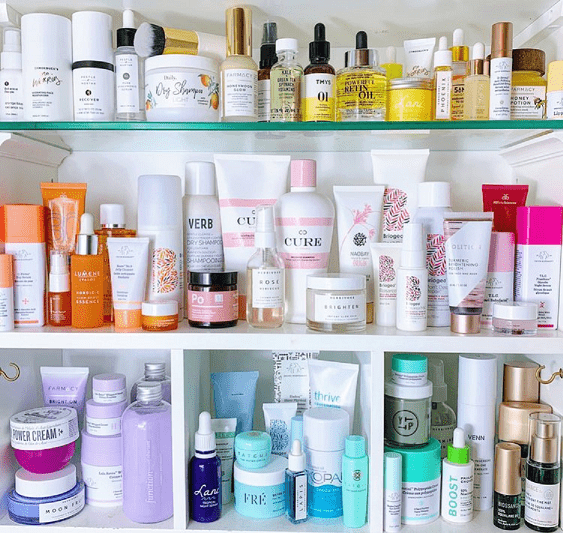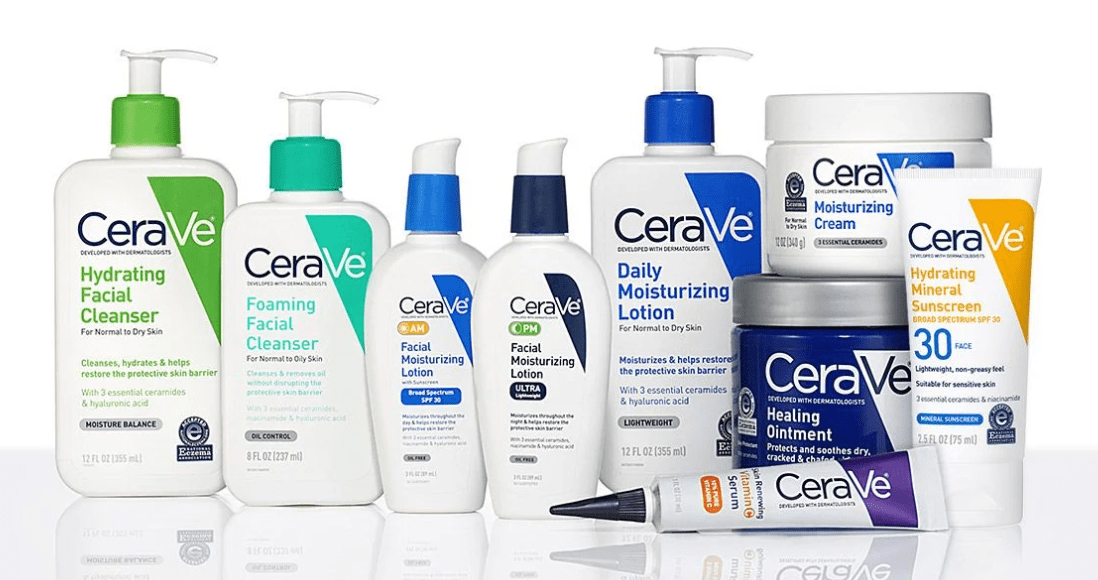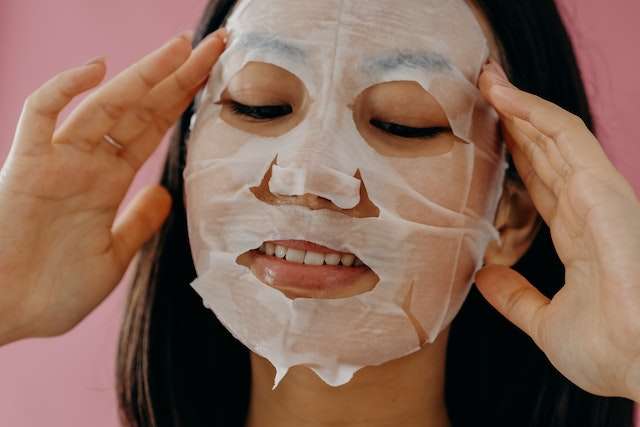Glowing skin is always in: the skincare market in the US
Appinio Research · 14.12.2022 · 37min read

Content
Skincare is the fastest growing market segment in the beauty industry, according to Statista the revenue in the Skin Care segment amounts to US$19.92bn in 2022 and the market is expected to grow annually by 3.91% (CAGR 2022-2027). After the entire beauty industry was halted by the Covid-19 pandemic, the market seems to be on track to a healthy recovery.
The skincare market keeps being one of the most innovative and interesting, especially when it comes to tackling the ever-changing consumer needs.
In our Appinio Hype Tracker, we investigated skincare habits and spending of 1,000 American consumers between 16 and 65 years of age (nationally representative according to age and gender) and we uncovered their habits, skincare routines, favorite products and interesting differences between target groups. Find out more about our findings in this blogpost.
Appinio has summarised the entire study results in our Hype Tracker Report in less than 15 pages. Interested?
The nineteenth US Hype Tracker
Why is skincare so popular now?
Before diving into the data, let’s take a bird’s eye view at the skincare market and understand why and how it has become so popular.
The make-up segment of the beauty industry has been in the driver's seat for a long time. All beauty consumers could see online were new makeup products, makeup tutorials, new makeup trends. The demand for makeup products was huge and it felt that consumers’ hunger was infinite.
Then the pandemic hit and make-up slowed down.
Stuck-at-home consumers were no longer using makeup, actually many started to think that the lockdown orders were the perfect opportunity to let their skin take a break from heavy foundations and makeup removers, let their skin breathe and just be. The advantage of staying at home and meeting colleagues on video calls was that people could play with lighting, use filters, or even avoid being on camera and just listen in (besides being very close to the fridge and sofa, of course).
If make-up products were bettering the skin by masking imperfections, skincare products could help consumers improve their skin on a deeper level, by going to the root of the problem and solving it.
And here's where skincare crept into consumers' beauty regimes in a bigger way than ever before (Source: Kantar).
The skincare segment's incredible growth can be attributed to many factors and it is undeniable that the pandemic exacerbated some of them: the growing desire for health-promoting and self-care products, increasing interest in the power and soothing effect of regimens and routines, the ability of social media to inform consumers, push products and make them go viral.
The skincare world has become incredibly fast-paced, a little online research will show you exactly how rapidly products get hyped and how fast they get forgotten, pushed away by the newest skincare trend, shinier bottle or the umpteenth celebrity that enters the skincare space.
Who is the target market of skincare?
The ideal target consumer of skincare products has always been women over 18, but this target has started to feel restrictive and outdated. The skincare market feels bigger and more welcoming than ever, greeting any age group and any gender.
So, it should not come as a surprise that in 2022 men are increasingly interested in skincare and make-up products.
Our Appinio data shows that 73% of men use skincare products and 39% use hybrid products that bridge the gaps between make-up and skincare, like BB cream, CC creams, foundations and more.
Of course, the percentage of women is always going to be higher (our data shows 85% of women using skincare items), but given the history of the skincare market it is an encouraging signal.
If we split our data according to age, respondents aged between 35-44 years old seems the most likely than other age groups to be having a skincare routine (85%).
The skincare consumer seems to still be going to a brick and mortar store to appease their skincare needs.
Our data show that most still shop exclusively in stores (52%), while one in five (20%) shops for skincare exclusively online, while 28% shops both online and in store.
Nothing new to report on Millennials being more comfortable with online shopping also for skincare products.
How would Americans describe skincare?
The Internet says “skincare is a ritual, not a routine”, and for 49% of American consumers it is like that, as the word they associate to skincare is “selfcare / a me moment”.
Another 45% think skincare is effective, but 27% think it is expensive. It is interesting to notice that men are more likely than women to say that skincare is a waste of money (10% vs. 4%).
Respondents aged 35-44 years old are more likely to describe as fun (25%) or a life-saver (19%).
How much do Americans spend on skincare?
As mentioned above, almost one-third of Americans consider skincare to be expensive, especially male consumers, but how much is too much?
Slightly over one in two (54%) American consumers spend less than $50 on skincare in a typical month, and only 4% spend over $200.
But taking a closer look at gender differences, men seem to be going for more expensive routines.
Millennials & 35-44 years-olds are the age groups that spend more to get “that glow”, could it be that the exposure to skinfluencers and celebrities makes them fall into temptation more often?
What are Americans' skin concerns?
Starting a skincare routine means getting to know your skin type first.The beauty industry has taught us that there 4 skin types:
- Normal
- Oily
- Combination
- Dry
Unfortunately, this skin type categorization is a bit restrictive. So, what is a normal skin type?
Nobody actually knows, and when asked to classify their skin type, people that say they have normal skin actually have combination or oily skin types (Source: The Korean Skincare Bible - Lilin Yang, Leah Ganse, Sara Jiménez).
Interestingly, in March 2021, Unilever announced they’ll scrap the label “normal” from their beauty and personal care products. This is the result of a study they conducted among 10,000 consumers, six in ten said the industry creates a singular ideal of who or what is ‘normal’, and that made them feel they should look a certain way. (Source: Unilever Press). This is part of the brand’s effort to be more inclusive, but it also highlights that consumers’ needs were not taken into account.
Our Appinio data tells us that the main skin concern American consumers are trying to tackle is dryness (52%), followed by ageing (45%) and oil production (32%).
Men seem more troubled by oil production than women (38% vs. 27%), while women seem to be wanting to tackle wrinkles and fine lines (49% vs. 39%) and dullness (21% vs. 11%) more than men.
Predictably, Gen Z is more likely to fight a battle to keep acne (52%), blackheads (44%) under control.
What are the most important skincare products?
According to skincare minimalist experts, a basic but effective skincare routine would consist of only 3 products:- Cleanser, to clean the skin and remove traces of sebum, makeup or SPF
- Face moisturiser, to replenish and feed the skin
- SPF or sunscreen, to protect the skin from sun damage
Everything else is nice-to-have but not a must! But then how would we have perfect shelfies like this?

(Source: A little skincare obsessed)
Looking at the top five most used products, American consumers seem to be sticking to the basics.
Moisturizers (or moisturizing creams) top the charts at 60%, followed by a cleanser at 51% (a bit odd, right? But actually there are skincare philosophies that swear by washing your face with only water) and in third place, we find sunscreen and SPFs at 30%.
Face masks rank fourth at 28% and the fifth place goes to eye creams at 25%.
Other types of products like toners, face oils and specific treatments seem less popular but they win big with Millennials.
A beauty routine can also include food supplements: glowing skin comes from within.
Our Appinio data tells us that 41% of US skincare consumers take food and dietary supplements, and half of them (47%) take supplements daily.
Are active ingredients in skincare important?
“An active ingredient is designed to address specific concerns related to the skin, like sun damage, acne, dullness, ageing and so on.” (Source: Lifestyle Asia)
Active ingredients are to skincare products what Timothée Chalamet is to any movie: the star everyone goes to the movies for.
Two thirds of American skincare consumers (65%) pay attention to the active ingredients in their products (exactly like two thirds of the world is obsessed with Timothée).
The skincare active ingredients that consumers are more familiar with are the following:
- Vitamin E (70%), antioxidant and helps against fine lines and wrinkles
- Vitamin C (68%), brightening and helps with hyperpigmentation
- Collagen (61%), help with skin elasticity and plumps the skin up
- Vitamin A (60%), moisturizing and speeds up healing
- Retinol (52%), an all-rounder that fights ageing signs and acne
Surprisingly, hyaluronic acid falls out of the top five and ranks 7th at 42%. This is a surprise as hyaluronic acid is an active ingredient present almost in every single beauty product.
Older segments are more likely to have heard of all the ingredients listed above, while Millennials and 35-44 years-olds seem to have more familiarity with ingredients like Glycolic acid, Lactic acid and Azelaic acid (popularized by skincare staple brands like The Ordinary or Paula’s Choice) but also with ingredients coming from K-Beauty, like Rice, Snail Mucin, Centella Asiatica and Mugwort.
Have a look at the results for yourself in our Appinio Hype Tracker report for free.
The nineteenth US Hype Tracker
Is packaging important?
Now that we are all familiar with the existence of shelfies, it is easier to understand what role packaging plays in the beauty industry.
Beauty packaging doesn't only need to be storing products correctly (i.e. dark glass bottles to store photo-sensitive ingredients like Vitamin C) but it also needs to pop.
As we mentioned before, the beauty and skincare market is flooded with SKUs (stock-keeping units), and attention-grabbing packaging is a must to stand out among so many products or to create a certain aesthetic.
We then asked our Appinio panel whether they paid attention to the skincare packaging and one in two (62%) said yes, they pay attention to packaging; two in five (43%) of them tend to gravitate towards simple, no-fuss, clean packaging; 16% tends to prefer a packaging that gives off a clinical, doctor vibe and 9% prefer a functional packaging, like a refillable one.
Which skincare brands are the most discussed in the US?
Brands like CeraVe, The Ordinary or Tatcha have risen to VIP status and social media has been pushing them only further up.
Therefore, we have tested these brands (and some more) in our Hype Tracker in order to see how much buzz each brand generates.
Here is how to read the Appinio Hype Tracker:
- Awareness score (X): what percentage of respondents have heard of CeraVe at least once?
- Curiosity score (Y): what percentage of respondents said “I find CeraVe (rather) interesting”?
- Appinio buzz (bubble size): the larger the bubble, the more often respondents have heard about it recently – the score is calculated based on the ratio of people who have heard about it, versus those who haven't.
![]()
Discover how different age groups perceive these hypes, go to our free analyser and check the full data set.
CeraVe is definitely a high-speed hype and it seems to be heavily discussed.
But it is not what people would consider a hip or trendy brand, it doesn’t have flamboyant marketing or flashy packaging.

(Source: CeraVe)
It has a very clinical, doctor’s office vibe, you can find it in pharmacies, at the chemist or a regular drugstore, and this fits the bill: it is developed by dermatologists. This doesn’t exactly scream sexy, right?
Then, how did such a serious brand push through the noise and become a Gen Z staple?
Here are some answers:
- It is extremely affordable
- Bottles are big (more bang for your buck)
- Skinfluencer Hyram Yarbro made an incredibly compelling case about the ingredients and their effectiveness on TikTok, making sales go through the roof
Is this the secret recipe to make a brand so successful? Not necessarily.
Skincare brands strongest allies: Skinfluencers
Since the rise of influencers, the world of marketing and social media has never been the same, the influencer marketing industry is set to be worth $22 billion by 2025. At this stage, influencers can quite literally make or break brands.
The platform Influencer Marketing Hub reported that beauty influencers operate across Instagram, YouTube and TikTok with significant overlaps among social media platforms. Although there are considerably fewer beauty influencers on TikTok than on Instagram or YouTube, the TikTok influencers have the highest average follower and engagement numbers. Interestingly, micro beauty influencers have the best engagement rate on Instagram.
The potential of social media for the beauty industry is immense.
Our Appinio data portrays a skincare consumer who is not easily swayed by ads or influencers, nevertheless, two in five (42%) fell in temptation at least once, the biggest offenders being 35-44 years-olds at 54% and Millennials at 53%.
Even if influencers have risen to the status of celebrities, what sets them apart is an authenticity that celebrities, more often than not, lack. And this authentic, almost raw image is exactly what the skincare consumer is looking for.
What would be the point of showing how the skin improved after starting using a specific treatment if the skin texture is going to be edited to look at its best?
In June 2021, legislators in Norway's Parliament passed a new law that requires content creators to disclose when they have retouched or added a filter to a photo (The Insider), and the UK is considering a similar bill.
To add on this, than two thirds (66%) of American consumers would like to see celebrities and influencers talk more about their skincare, skin concerns and normalize showing normal skin, without heavy make-up or filters.
Skincare's biggest trend: The Korean Skincare routine
The skincare world is constantly changing and new trends are always popping up. Have you heard of skin cycling or skin flooding? We won’t blame you if you haven’t, it is impossible to keep up with all of them.
But there is one trend that has been changing and shaping the beauty industry for a while: K-beauty and the Korean skincare routine.
South Korea has been rising to the spotlight not only for exporting the catchiest tunes and most amazing dance moves in the music industry (any K-pop fan out there?), but also for having one of (if not the) most innovative approaches to beauty and skincare.
The hype about K-Beauty has arrived in the West only recently and the most revolutionary product and the unchallenged winner of every self-care moment is the face sheet mask.
A special fabric is infused with serum and applied for 15-20 minutes so that the many skincare ingredients are optimally absorbed into the skin. A sheet mask assists in this process as it stores additional serum. And it covers the face, reducing possible evaporation. Therefore, sheet masks are very effective in delivering active ingredients to the skin. (Source: Stay Well).
The Korean Skincare routine is much more than a commercial idea, it is a philosophy, it is a lifestyle. This routine, which consists of multiple steps and products, is a ritual, it is considered as an art.
Opening the K-Beauty doors means entering a world of infinite wonders and endless combinations.
Let’s go quickly through a very basic Korean skincare routine to understand what it consists of:
- Cleansing oil, to remove makeup, sunscreen residues, dirt and other oil-based impurities
- Gentle foam cleanser, to make sure any residue has been removed and deeply clean the skin
- Hydrating toner (or mist), to replenish hydration
- Essence, to prepare the skin to soak up all the active ingredients
- Serum, to tackle any specific skin concern
- Eye cream
- Face moisturizer
- Sunscreen in the morning, sleeping pack for an evening routine.
Of course, we are forgetting other products like exfoliating toners / serums, face sheet masks, lip scrubs, pimple patches. These are usually included on rotation but not daily.
As you can imagine, a Korean skincare routine requires a certain amount of dedication and financial commitment, but your skin is 90% of your selfies.
Final thoughts on skincare
In this blogpost we have gone through the results collected in our Appinio Hype Tracker on skincare habits and spending in the US.
We have learned that the skincare and beauty industry keeps growing and will keep growing, opening the door to new target groups.
The push to innovate is crushing and new brands keep popping up at lightning speed, helped by the power of (micro) influencers setting new trends on social media every day. And we haven’t even investigated the rise of skin care tools and devices, a small niche that consumers are starting to look at with increasing interest.
So how can your brand push through the noise? Talk to us, Appinio can help.
Get facts and figures 🧠
Want to see more data insights? Our free reports are just the right thing for you!
